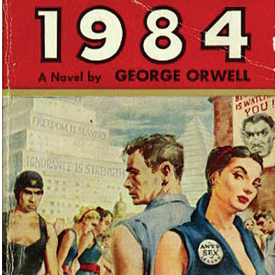 Do you ever feel like we are living in a timeline where people are actively trying to roll back the clock? For example, renewable energy technology is being ignored for coal, despite experts saying it is on its way out. We even have the president attacking Amazon as if online shopping is inferior to retail stores. Now people are apparently nostalgic for the constant threat of nuclear war, which makes The Berlin Project by Gregory Benford unfortunately relevant in this day and age.
Do you ever feel like we are living in a timeline where people are actively trying to roll back the clock? For example, renewable energy technology is being ignored for coal, despite experts saying it is on its way out. We even have the president attacking Amazon as if online shopping is inferior to retail stores. Now people are apparently nostalgic for the constant threat of nuclear war, which makes The Berlin Project by Gregory Benford unfortunately relevant in this day and age.
The Berlin Project tells the story of Karl Cohen, an actual scientist who worked on the Manhattan Project and father-in-law to the author. In our timeline, he devised a way of using centrifuges to make weapons grade uranium for a nuclear bomb. Now in our timeline, this method was rejected in favor of a gaseous diffusion method which cost billions and delayed the project significantly while the engineering problems were worked out. Benford proposes, however, that Karl is more assertive and has a little luck early on by getting private investors on board who hope to use nuclear power for civilians in the future. Thus a nuclear bomb is built a year earlier in time for the Normandy invasion. As the title suggests, the target for America’s first nuclear strike is Berlin, but the city’s destruction doesn’t necessarily give the Allies the outcome they were hoping for.
And for those angry that I “spoiled” the story, the book cover already beat me to it (seriously take a look at it, it even gives you the date the bomb was dropped). This story is certainly one where the journey is more important then the destination. We see Karl come home to America from Paris with his new wife. We see him get a job at Columbia where he is drawn into the orbit of several famous physicists who are afraid that the Germans are trying to build a nuclear bomb. We see how seriously Karl takes the threat of the Nazis as he works endlessly to find the right method to harvest enough uranium to build the bomb before the Germans do, even if it means standing up to scientists and generals who keep wanting to try new ideas or build other things at the same time. For his work, Karl even gets a ride on the bomber going to Berlin and we also see from his eyes the aftermath of the bombing.
What I liked most about this book was the aftermath. I was afraid at first the book would end with the bombing and the implication things would be better, but no, Benford showed that nuclear weapons aren’t the magic war-ending weapons people think they are, at least back in the 1940s. Many alternate historians will look at what happened in Japan and think that any use of nuclear weapons would mean immediate surrender by the target nation. The problem with that kind of thinking, however, is that people ignore the fact that in 1945 Japan was on its death bed. Its navy and air force were destroyed, its cities were being bombed daily, civilians were being given bamboo spears so they could participate in suicidal charges against American invaders and even after TWO nuclear bombings there were still Japanese officers who wanted to keep fighting by attempting a coup to prevent Japan’s surrender.
Benford for his part understands that while Germany was on the ropes in 1944, it wasn’t beaten yet. It still had armies in the field, weapons like V-2 rockets and jets to still unleash on the Allies and knowledge of nuclear weapons. Plus, while they didn’t have a nuclear bomb, they did have a lot of radioactive material and stockpiles of chemical weapons. Combine this with a Nazi high command that isn’t quite wiped out with the destruction of Berlin and you get an intriguing look at an alternate road to VE Day.
That said, I don’t necessarily agree with all of Benford’s assumptions. I’m still iffy on why Berlin was the first target, especially since in our timeline Tokyo was not targeted by nuclear weapons because they wanted to make sure someone was still around to surrender. Benford sort of addresses this, but the counter-argument was rather weak in my opinion and seemed more like he was hand-waving the problem away rather than addressing the real issue. I also think Benford’s belief that the German generals would do the right thing if Hitler is killed buys a little too much in the Clean Wehrmacht myth, but certainly a coup attempt by Germany’s generals was on the table and it almost happened in our timeline.
Still those are minor quibbles in the grand scheme of things. I enjoyed The Berlin Project. Karl was a likable narrator, the story was well-researched and it was interesting to see WWII from the perspective of a scientist rather than a soldier or politician. Additionally, I liked the optimistic ending which was similar to Second Front: The Allied Invasion of France, 1942-43 by Alexander M. Grace. I like stories that change the paths of certain events, without necessarily changing the entire outcome. It teaches us that maybe this isn’t the best of all possible timelines and we should learn from our mistakes going forward.
If I had any other criticisms it would be that the story does drag in parts and Benford’s depictions of Karl’s home life were never as interesting as Karl’s work life. Additionally, my background in science is rather weak, so I can’t comment on how much the author gets right when it comes to quickest way to build a nuclear bomb. If there are any scientists and engineers who have read The Berlin Project and can comment on that, I would love to read your thoughts.
That said, I still think The Berlin Project is worth a read. Pick it up if you want a different perspective on an alternate way to fight in WWII.











Bedford seems to imply they would lead to paradise on earth. Everything that goes badly in our own timeline goes swimmingly in Bedford’s, thanks to the existence of nuclear bombs. He does show (probably correctly) that Hitler wouldn’t have been cowed, but contrives a way for the war to end early, and everything afterwards just falling into place.
Neat idea, but I wasn’t convinced.